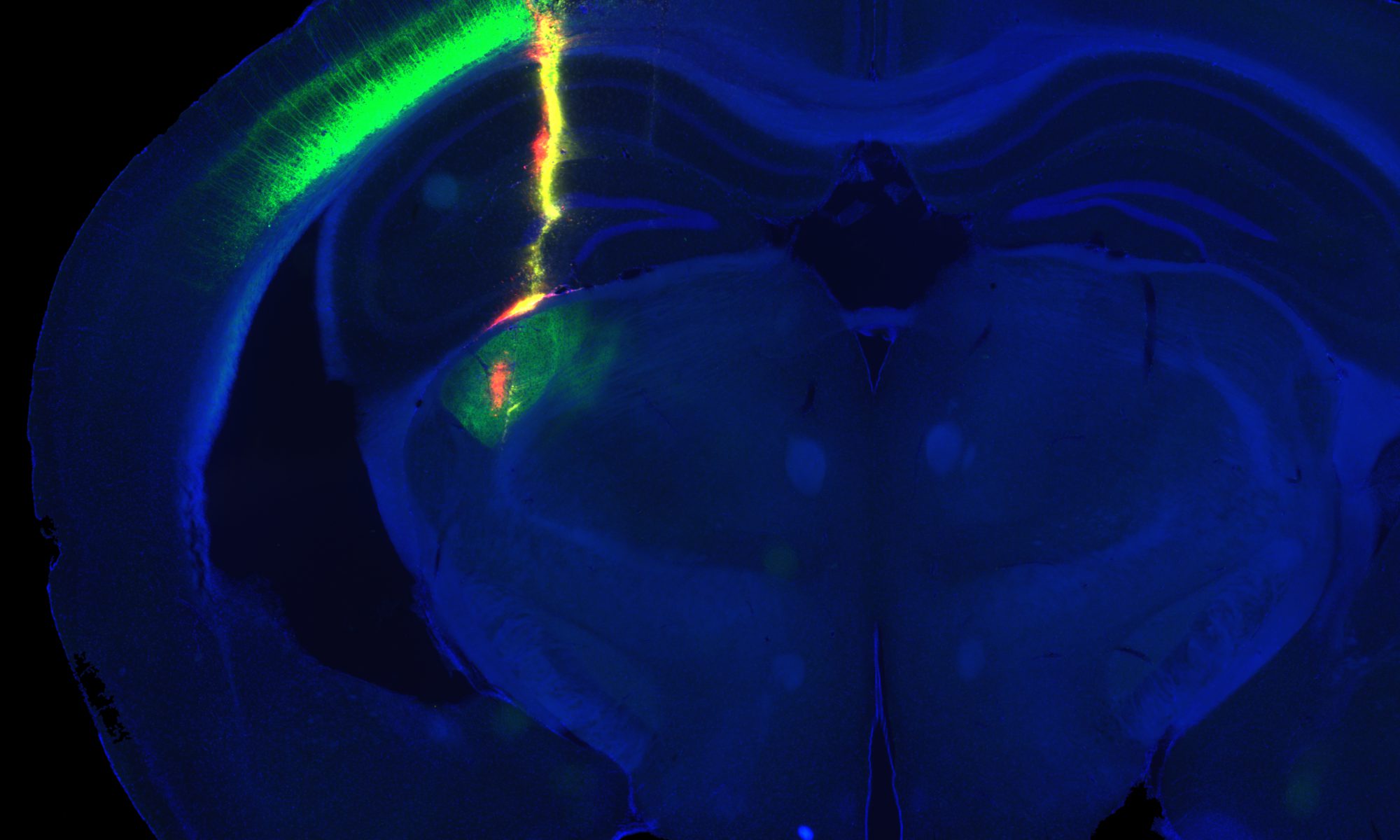Feedforward and feedback processing in thalamus
As an ideal model circuit to understand the role of feedback, we use the thalamo-cortico-thalamic loop, we we study how feedback modulates activity in the dorsolateral geniculate (dLGN) of the thalamus and in the thalamic reticular nucleus (TRN). In the visual system, incoming retinal signals are transmitted to the primary visual cortex through relay cells in the dLGN, which is one of the earliest stages of visual information processing that integrates sensory information with contextual information and signals reflecting the behavioral state of the animal. Indeed, only ∼ 10% of inputs to relay cells are from retinal ganglion cells, while the remaining inputs come from local and long-range inhibition, brainstem centers, and corticothalamic feedback. Our past work has shown how cortico-thalamic feedback modulates activity in the dLGN and in TRN (Born et al. (2021), Nature Neuroscience).
In ongoing projects, we focus on the dynamics within this loop, exploiting simultaneous recordings from multiple stages in the loop paired with optogenetic manipulation of L6 cortico-thalamic pyramidal cells. In collaboration with Philipp Berens (University of Tübingen) and funded through the SFB1233 Robust Vision, we develop a quantitative, interpretable model of dLGN activity, capturing not only sensory drive, but also feedback and behavi- oral effects.
State-dependent visual processing
Brain state can fundamentally control how the visual system processes informati- on. For instance, during alert states, as indexed by pupil size or locomotion, neural activity throughout the visual system is enhanced, population responses are de-correlated, and information encoding is improved. Our past work has emphasized the view that such state-dependent processing is not limited to cortex (Erisken et al. 2014, Current Biology), and that effects of locomotion and pupil size in dLGN are not simply inherited from cortex (Spacek et al. 2022, eLife). In recent work, we moved beyond relating neural modulations to a single “level” of arousal, and instead characterize state-dependent modulations in the dLGN using multi-scale, dynamic aspects of the pupil size signal (Crombie et al. 2024, PLoS Biology). In ongoing work (collaboration with M. Biel, LMU Pharmacy), we tackle one of the cellular mechanisms that might mediate state-dependent processing, and assess the role of hyperpolarization-activated cyclic nucleotide–gated (HCN) channels in dLGN.
Neural basis of visual behavior
Neural activity, even in early sensory areas, is modulated by visual behavior. In the past, we have shown that visual behavior in mice does not only reflect stimulus properties, but can also heavily be influenced by non-sensory factors, such as past rewards or past choices (Busse et al. 2011). In an ongoing project, we study how such history effects change with learning of a two-alternative forced choice task.
We are also enthusiastic about characterizing, in a quantitative and objective way, behavior itself. Our past work has revealed step-like changes during learning (Jurjut et al., 2017). In a collaboration with C. Böhm (Vienna), we are currently expanding our analysis of learning-related changes in behavior to exploit modern, unsupervised methods operating directly on video material. Our aim is to understand whether operant changes in behavior might be preceded by uninstructed yet systematic alterations of movements, which would indicate learning that otherwise would go unnoticed.
Transformation of neural representations across early visual processing stages
Within the SFB 1233, our past work with T. Euler (Retinal Physiology, CIN) has revealed rules of selection and integration of visual information between the retina and dLGN (Roman-Roson et al. 2019). In addition, our experiment-theory collaboration with T. Tchumatchenko (University of Bonn) as part of the DFG-funded priority program “Computational Connectomics”, has used the SSN model to infer the connectivity between dLGN and V1 and within subpopulations of V1 neurons, based on the recorded functional responses properties (Kraynyukova et al. 2022). Ongoing work extends this approach by considering the temporal evolution of visual signals within the circuit.
Natural stimuli for mice
Across species, visual systems have evolved to efficiently cope with the specific information encountered in the animal’s natural habitat. Visual stimuli that are matched to natural conditions are therefore essential to understand how neurons process visual information. In a project with Thomas Euler (CIN, University of Tübingen), we characterized the visual input received by the mouse visual system under natural conditions (Qiu et al. 2021). Ongoing work aims at understanding how such input is processed along key stages of the early visual system (funded by SFB 1233).
Munich Intelligent Robotics
We are proud to be part of the Munich Intelligent Robotics ecosystem where we collaborate through the ONE MUNICH strategy forum project “Next Generation Human-Centered Robotics“. An example of recent joint work is Hidalgo-Carvajal et al., 2023, where we use completion of 3D shapes (similar to predictive processing in the brain) to improve grasping.
